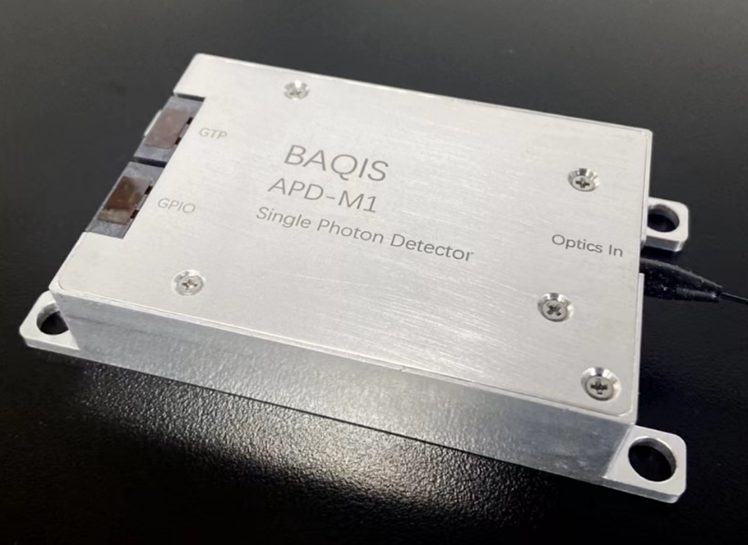BAQIS Chief Scientist Zhiliang Yuan & Team Invented a Novel Single Photon Detection Circuit Based on Ultra Narrowband Radio-Frequency Interference
2023/02/16
Quantum Photonics Group of BAQIS has recently published a research article entitled "Ultra-narrowband interference circuits enable low-noise and high-rate photon counting for InGaAs/InP avalanche photodiodes", reporting the invention of a novel readout circuit that can effectively suppress electronic background noise and thus enable low-noise and high-rate single photon counting.
Semiconductor InGaAs avalanche photodiodes (APDs) are of low-cost, compact and allow cryogen-free operation, and have thus found a wide-spread operation in quantum communication networks. They are usually operated in gated Geiger mode to avoid excessive spurious detection events. However, in reaction to gating, charging and discharging of the detector will produce a capacitive response, the amplitude of which can be orders of magnitude stronger than, and thus overwhelming, single-photon induced avalanche signals. Therefore, a readout circuit is necessary to reject the capacitive response. Existing circuits have operational shortcomings: self-differencing circuits are bulky while band elimination circuits may cause jittery in photon detections due to bandwidth limitations.

Fig. 1: UNIC circuit
To resolve the above shortcomings, the team in the Quantum Photonics Group introduced for the first time surface acoustic wave (SAW) technology into single photon detection. As illustrated above, the raw APD signal contains two components: the sinewave capacitive response and an avalanche. Splitting into two paths, the signal through the top arm is simply attenuated while the counterpart through the bottom is filtered by a SAW bandpass filter leaving only the sinewave component. Recombining at the exit beam splitter, the two paths interfere destructively for the sinewave component, thereby outputting a clean avalanche.
UNIC circuits can reject the capacitive response by up to 80 dB per stage with little distortion to avalanche signals. Cascading two UNIC's in a readout circuit, the team was able to achieve a high count rate of up to 700 MCount/s and a low afterpulsing of 0.5 % at a detection efficiency of 25.3 % for 1.25 GHz sinusoidally gated InGaAs/InP APDs. Application to quantum key distribution (QKD), the UNIC detectors are expected to allow a secure key rate (SKR) exceeding 25 Mb/s over a 2 dB quantum channel. This rate would be a substantial improvement over the state-of-the-art SKR of 13.72 Mb/s achieved with self-differencing detectors.

Fig 2: APD-M1 single photon detector module.
The team is prototyping single photon detector modules (APD-M1) based on UNIC circuits. The modules support further research and development projects related to quantum communications in BAQIS.
Article link: https://opg.optica.org/oe/fulltext.cfm?uri=oe-31-5-7515&id=526237
 中文
中文 Email
Email QCloud
QCloud Log in
Log in
